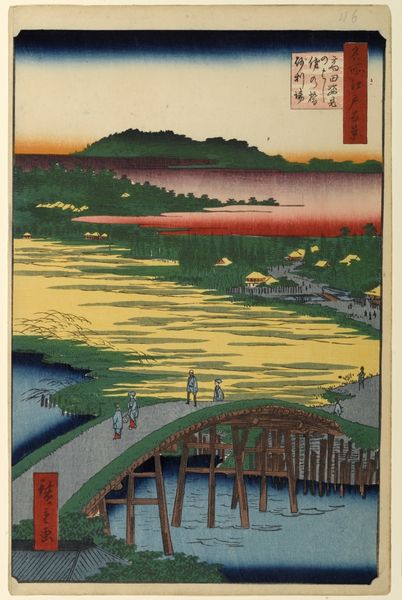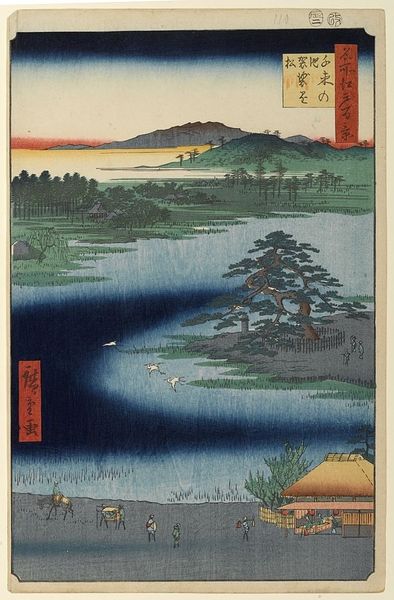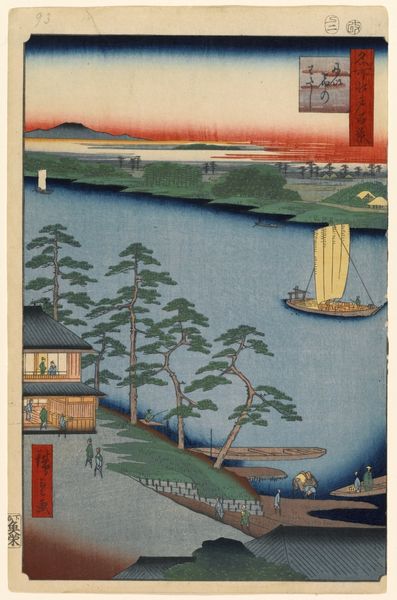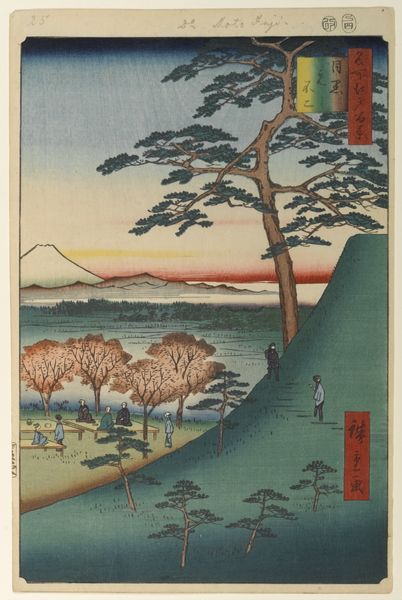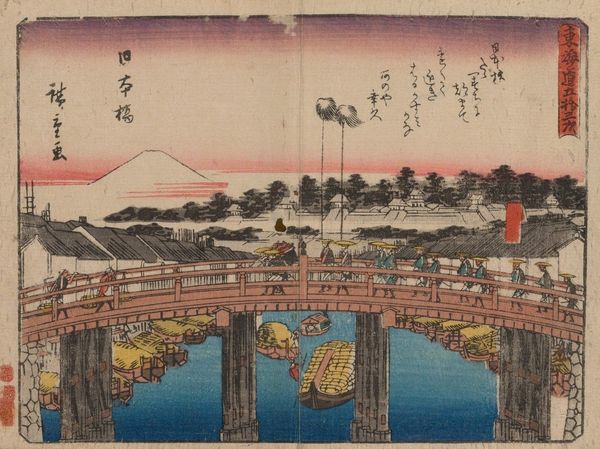
print, woodblock-print
# print
#
asian-art
#
landscape
#
ukiyo-e
#
coloured pencil
#
woodblock-print
Copyright: Public Domain: Artvee
Curator: Let's consider this print, "Ochanomizu Bridge," dating from the 19th century by Utagawa Hiroshige, crafted as a woodblock print. Editor: It's beautiful! I’m struck by how the woodblock print process impacts the final artwork – the defined lines and flattened perspective. What aspects of its production are most significant to understanding its impact? Curator: I focus primarily on the materiality and socio-economic aspects of art production. Consider the woodblock print here. It was not a solitary act of artistic genius but rather a collaborative, industrial process involving designers, carvers, printers, and publishers. The publisher, in a way, functions as the "manufacturer," concerned with distribution and profitability of what are, after all, commercial products consumed by a public audience. Editor: That’s interesting! I never thought about it that way. Curator: Absolutely, think about the labour! Artisans who reproduced these images had specialised skills. How does recognizing their contributions change how we appreciate the finished product and our notions about individual artistic genius? Editor: It really makes me appreciate the level of craftsmanship. Each step requires tremendous skill. So the choice of subject—the bridge, the river, the distant Mount Fuji—do those carry symbolic weight, perhaps relating to the social context? Curator: Good question! Landscapes in *ukiyo-e* often catered to a burgeoning tourist industry. Prints like these served as souvenirs or “travel guides” for those who sought picturesque views, signifying not only artistic expression but also the rise of a leisure culture supported by commercial endeavors and contributing to the national identity narrative with Mount Fuji. Editor: I see! It shifts my focus from solely aesthetic appreciation to understanding art's function in society as a consumable good shaped by collective labour. Curator: Precisely! Appreciating the economic infrastructure opens up conversations beyond traditional art-historical methods and brings in diverse voices who contributed to making artworks available. Editor: I definitely will never look at a woodblock print the same way again. Thank you!
Comments
No comments
Be the first to comment and join the conversation on the ultimate creative platform.



